Outdoor Research Shadow Insulated Hoodie
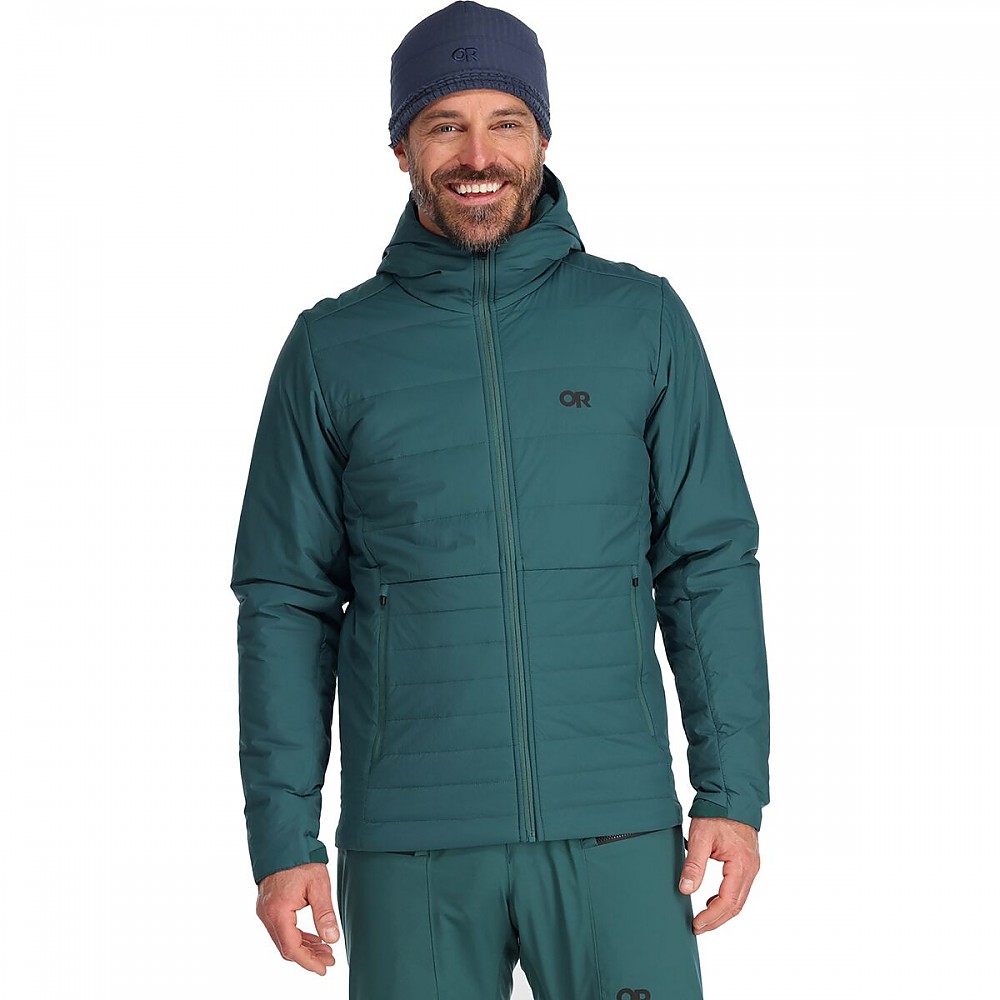
The Shadow Insulated Hoodie is a mid-weight insulating layer; a relatively thin layer of synthetic insulation is sewn between two layers of somewhat wind-resistant but air-permeable and somewhat stretchy or forgiving shell material. The Shadow Insulated Hoodie is appropriate for a fairly wide range of temperature and weather conditions as an outer layer or mid-layer. This layer’s best use is for high-output cool and cold weather activities where you want to stay warm while working hard and generating a lot of heat and moisture.
On the flip side, fabrics that do so well at regulating temperature and moisture aren’t particularly good performers in high wind, where this is much better suited to wear under a truly wind-resistant shell, and they aren’t super warm for really cold weather unless you wear a significant shell or warm layer over it.
Pros
- Versatility
- High output activities
- Comfortable
- Range of motion
- Most details thoughtful and well-done
- Quiet fabric
Cons
- Zipper pulls with gloves
- Slightly narrow fit
Intro


I wore the Outdoor Research Shadow Insulated Hoodie (Shadow Hoodie for the balance of this review) from mid-fall through early winter in a variety of situations and different layering scenarios in the mid-Atlantic and Northeast, in temperatures ranging from low 20s to about 50 Fahrenheit, once or twice in light snow, always walking or hiking.
The Shadow Hoodie thrives when you're active because it combines decent insulation with a much better than average ability to vent moisture and heat to regulate your core temperature. It also happens to be a very comfortable jacket with a number of nice details and a good fit for an active layer—true to size trending toward narrow and a soft-feeling shell material, a good choice for a cool summer night.
Basic Details
The Shadow Hoodie retails for $199 and is available in men's (sizes S through XXL) and women's (sizes XS through XL) versions. It’s insulated with synthetic VerticalX Eco SR, an at least partially-recycled puffy insulation between two layers of soft, somewhat stretchy nylon that is partially wind-resistant but that also lets some air flow through.
The shell fabric is treated with water repellent that means mist or light rain may bead up, but long-term exposure in the rain will probably wet out the fabric. Outdoor Research also offers a men's and women's Shadow Insulated Vest.

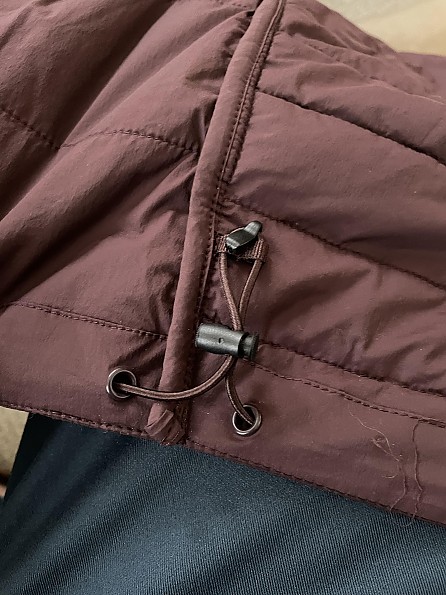
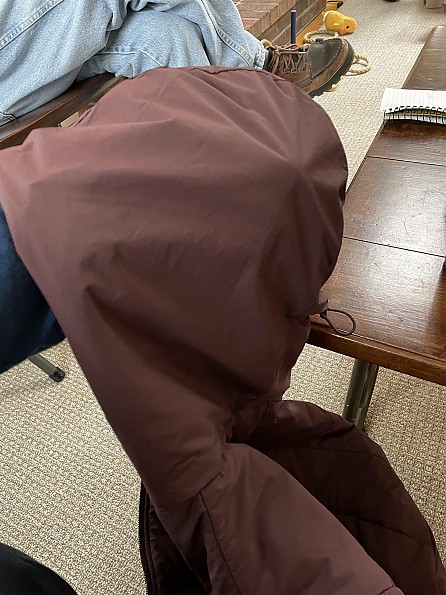

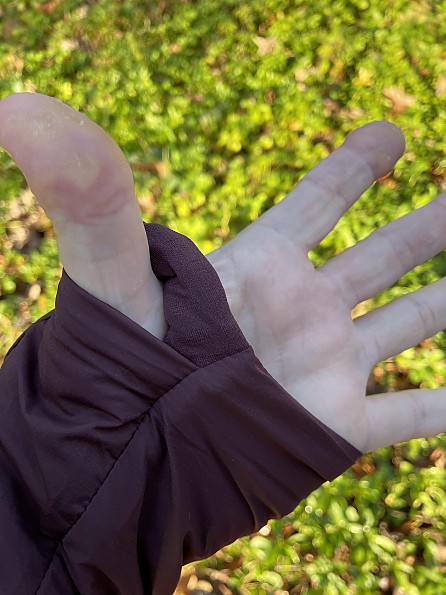
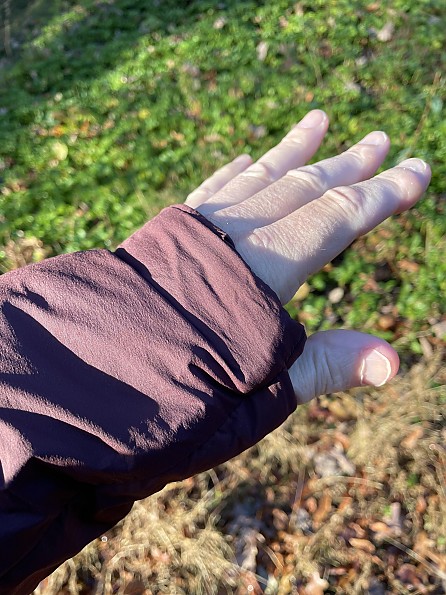

The jacket has a full-length zipper with a small flap backing it (soft material at the top and a zipper "garage" to protect your face), two zippered handwarmer pockets lined with more soft/fuzzy material, and two big interior drop-in pockets (you could stow a hat, gloves, a day’s worth of snacks there—note, they don’t zip or close at the top).
The insulated hood has a rear adjustment to pull it tight, as does the hem. The cuffs are not elasticized or adjustable, but they have built-in thumb loops, nice for pulling on an outer shell or warm layer.
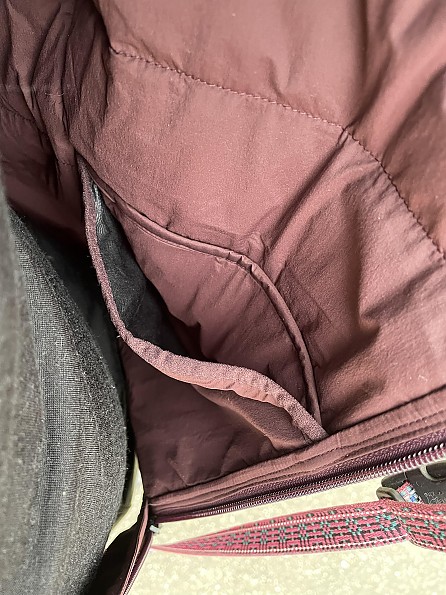
The zippers work fine but are not easy to use with gloves on—they really need zipper pulls.
Unusual Properties of this Jacket
The goal of this jacket and a few others (Patagonia Nano Air, Arc'teryx Atom are examples) is to merge the light weight and other advantages of puffy synthetic insulation with a shell material that really breathes. Unlike most lightweight puffy jackets with down or synthetic insulation, which use mostly wind proof nylon shells, these use a softer and more stretchy shell material that’s less wind-resistant, more able to ventilate heat and moisture, yet still somewhat wind and water-repellent. It's also soft and quiet in the wind.
If you’re humping a big pack uphill, Nordic skiing, or doing other high-output things, this can be extremely advantageous. You might very well spend less time layering up and down, and this might replace multiple fleece or shell layers, depending on how you use it.
The inner and outer shell is nylon. Pretty thin, moderately stretchy, and moderately resistant to wind and drizzle, but not as much as most "hard" shells. Also, it's not as resistant as a reasonable robust soft shell, but a fair bit more capable at venting excess moisture.
Worn alone over a t-shirt, it might be a good jacket for canoe-camping on a cooler summer evening. I wore it into the high 40s when I was hiking in October. By December, I was wearing it with a heavier wool base layer and staying comfortable on long, mid-20s hikes in snow showers. I haven’t encountered weather colder than that, but layering a GoreTex shell or heavier insulating layer over it could take you into teens, even single digits or below zero on stops. Throughout, the Shadow Hoodie kept me warm, even when I was sweating hard, and dried out incredibly quickly (much more so than wool baselayers I wore underneath it).
A jacket that can take you from cool summer nights or fall days to winter hiking (under a shell) is impressive. There isn’t much else on the market that compares well.
Fit/Comfort
Outdoor Research says the Shadow Hoodie has a standard fit. I found that was true in the sense that I normally wear a men’s XL, and their XL is definitely the right size for me. It has enough room to accommodate all but the heaviest base layers, but I would not layer a fleece underneath—it would be a little too tight for me. I thought range of motion for the arms and shoulders was excellent and that the length, roughly hip or slightly above, was just right. So is the sleeve length.
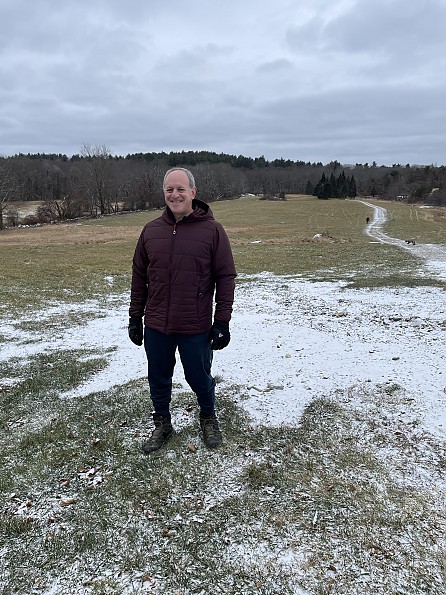
Another advantage of the nylon shell is that it has some "give" and feels great against your skin for a shell jacket—definitely fine to wear over a short-sleeved shirt.
The non-adjustable cuffs do the job reasonably well. I normally like to see a little bit of elastic at the cuffs, but the lack of it didn’t bother me with the Shadow Hoodie. The ability to pull the hood tight is a definite plus.
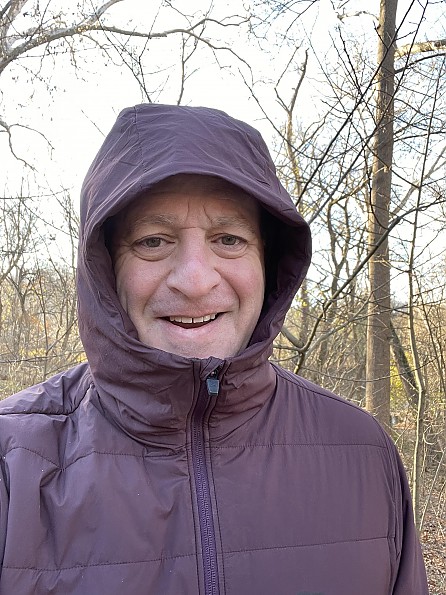
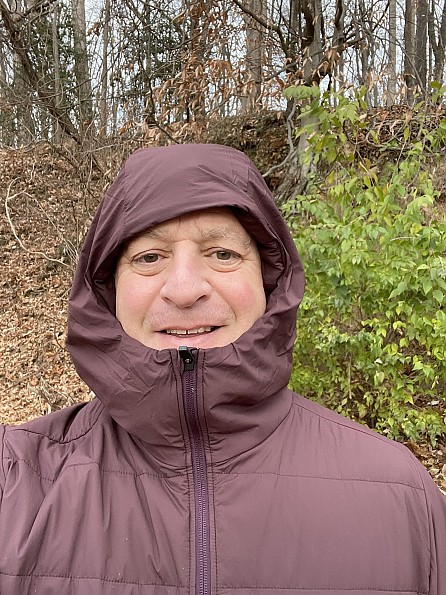
Function in the Field
Rather than summarize, I'll include some observations I made along the way on specific days.
1. Cool weather hike on the Billy Goat Trail near my house in Maryland. High 40s, breezy. I wore the Shadow Hoodie alone over a short sleeved wool t-shirt. On the tougher parts of the trail, I unzipped most of the way because I was getting too warm. When things got shady and cooler, I zipped up and felt comfortable. No meaningful damp areas inside after the hike, and (as always), slight dampness dried out quickly.
2. Cold weather half day hike in New England. Low 20s and not much wind. I wore the Shadow Hoodie over a pretty heavyweight long sleeve wool zip neck, insulated gloves, wool beanie. Quite a bit of up and down, I was sweating pretty hard at points but also feeling the cold on my face. Comfortable throughout, just enough warmth. End of the hike, the wool layer was moderately damp, and the inside of the Shadow Hoodie just a little damp. A lot less moisture accumulation than I would have had with a normal nylon wind shell.
3. Cooler afternoon, Seven Locks Trail. One of my favorite trails with our dog off the leash. High 30s, I decided to wear shorts, wore a mid-weight synthetic base layer, insulated gloves. Though my legs were a little cold, a really good combination on top for the conditions. Started out with a wool hat, pretty quickly swapped it for a ball cap, and felt comfortable start to finish. Synthetic base layer under this, with the way this jacket lets out moisture, worked well.
I’m heading to the Shenandoahs in Virginia next week for a long day hike with one of our daughters. We have had an unseasonably warm winter in the mid-Atlantic, so I’m guessing I'll either wear this on stops and on top, or layer it over a light synthetic t-shirt or long-sleeved shirt.
Durability
So far, so good after a few months. It seems to be well put-together and made from quality materials.
Conclusions
What a great layer for hiking and being outside, whether as an outer layer or part of a layering plan. It performed really well in a lot of different situations. Outdoor Research has a winner with this jacket. With some zipper pulls and slightly elastic cuffs, this would be a five-star review.
Background
Worn from mid-fall through December on at least a few dozen hikes and walks.
Source: received for testing via the Trailspace Review Corps
(Sample for testing and review provided by Outdoor Research)
Your Review
Where to Buy
You May Like
Specs
| Men's | |
|---|---|
| Price |
Current Retail: $148.73-$249.00 Historic Range: $39.99-$249.00 |
| Weight |
16.7 oz / 473 g |
| Center Back Length |
29 in |
| Fabric |
bluesign approved, 90% Nylon, 10% Spandex, 20D Stretch Woven Shell and Lining, VericalX ECO SR, 55% Repreve Recyled Polyester, 35% Sorona, 10% Polyester Insulation 60 G/M2 |
| Women's | |
|---|---|
| Price |
MSRP: $199.00 Current Retail: $43.99-$235.00 Historic Range: $43.99-$235.00 |
| Weight |
15.5 oz / 439 g |
| Center Back Length |
27.5 in |
| Fabric |
bluesign approved, 90% Nylon, 10% Spandex, 20D Stretch Woven Shell and Lining, VericalX ECO SR, 55% Repreve Recyled Polyester, 35% Sorona, 10% Polyester Insulation 60 G/M2 |

